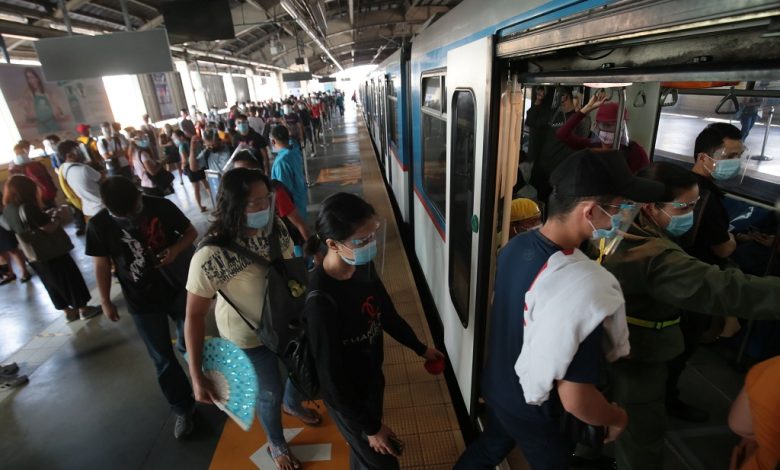Moving people safely

As we continue to open up the economy, and further remove restrictions on movement of people, more businesses are starting to require employees to report for work at the office. In this line, we should also start making adjustments particularly in public transportation. State-funded free-ride programs are about to end, and company-funded shuttle services may soon go.
Workers, soon enough, will again be left to provide for their own way to work. Public transportation options, and capacity, are something that we should have planned on. For many, private transportation has also become more expensive considering higher fuel prices. And cycling is an option only for those who can afford it, financially and physically.
And then there are public health considerations. As more people are allowed to move around, and are crammed into jeepneys, buses, and trains, another COVID-19 surge may just be a matter of time. Businesses are starting to operate at higher capacities, and some schools have resumed limited face-to-face classes. And with vaccine efficacy waning over time, the possibility of a surge is a valid concern.
Europe, for one, is now again battling an upsurge in the pandemic, Agence France-Presse (AFP) reported, noting that Austria is returning to lockdown this week while Germany and the Netherlands are poised to announce new restrictions. A further 700,000 people in the 53 countries that comprise the WHO’s European region could die by March 1, AFP quoted WHO (the World Health Organization) as reporting. Among the causes cited were the easing of restrictions and that vaccine-induced protection against infection and mild disease was declining.
We are doing better locally, but nobody knows for how long. Based on current trends, new daily COVID-19 infections in Metro Manila in particular may drop to fewer than 100 cases a day by Christmas, the OCTA Research Group said in a recent report. The Philippine Star reported, quoting Octa, that the seven-day average in the NCR (National Capital Region) from Nov. 16 to 22 dropped to 293 cases, with a positivity rate — the percentage of people who test positive for COVID out of those tested — of two percent.
“The last time the seven-day average in the National Capital Region (NCR) was below 300 was from Jan. 2 to 8, 2021,” Star quoted OCTA fellow Guido David. He noted that “based on current trends,” the seven-day average in the NCR could drop to fewer than 200 by the first week of December and to fewer than 100 around Christmas.
But, for this to happen, David said, “we must continue to adhere to minimum public health standards to sustain the trends.” And this, in my opinion, is where the problem lies. The Christmas season has obviously started in the Philippines, and more people are now out of their homes, even as the pandemic and the national medical emergency are far from over. As people gather or congregate, it become more difficult to ensure adherence to “minimum public health standards.”
Ensuring public safety is even more difficult when it comes to public transportation. And this is where creativity and ingenuity will count a lot. Last March, a pilot project was started in the City of Manila to run electric buses that can safely accommodate passengers following physical distancing restrictions. Electric vehicle firm GET Philippines, the Manila City LGU, and the Aboitiz Group partnered for the project.
I mention electric buses because of what I understand of GET Philippines’ fleet management system, it has been designed to tackle COVID and to meet minimum public health standards. Its COMET electric mini-buses are fully electric and fast charging; have GPS tracking and fleet management; are equipped with Wi-Fi; and have been designed with app-based contactless ticketing to limit the handling of cash and interaction between driver and passenger. If I am not mistaken, there is also an option for automatic app-based contact tracing.
More important, the same electric buses have been designed to ferry persons with disabilities (PWDs), senior citizens, and other people with mobility limitations. Add to this the fact that these mini-buses are electric, thus mitigating the impact of high fuel prices. They are also smaller than regular buses, and can easier navigate Metro Manila’s narrow streets.
“Our goal is to turn electric vehicles from expensive products for the few to life-changing solutions for the many,” GET President Freddie Tinga said in a statement. “Our COMET electric mini-bus uses Formula E engineering from Spain and combines that with Silicon Valley analytics on our mobile app. The result is a more efficient, cost-effective, zero-emission transport system and a better and healthier experience for passengers and pedestrians alike.”
I have read reports of COMET bus trials in Davao City, and then in Manila. The Cebu Daily News reported that at least 30 of the same electric buses will be plying Metro Cebu routes by January 2022, to address traffic congestion and air pollution. Electric buses can run the same number of hours as any diesel bus, GET said, but minus the emission.
Also, GET’s fleet management system can track the buses and the passengers, who will need to download on a mobile phone the GET Pass app. The app will allow them to gain access to the vehicles and pay fares, among others. The bus service can also be used through a subscription by businesses for their workers, including PWDs, with rates similar to existing fare for public transportation.
As the electric vehicle industry matures in the Philippines, along with new technologies for fleet management, public transportation will start shifting to more cost-efficient, and more environment- and commuter-friendly alternatives. Electric trains are a long-term goal. But electric minibuses and jeepneys are low-hanging fruits that are quicker to deploy.
GET Philippines’ COMET electric mini-buses and its “subscription” service is just one of the emerging options to date. I am sure more options will become available soon enough. What matters now is that available options should be evolved to address commuting needs in a COVID world. It is not enough that public transport just enables people’s movement. We should move people in the safest and most secured ways possible. Public health is still the priority.
MARVIN TORT is a former managing editor of BusinessWorld, and a former chairman of the Philippine Press Council
matort@yahoo.com




